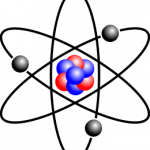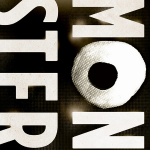
Last week I had a visit from a friend of mine, who was on something of a farewell tour. After several years of planning, he'd packed in his dependable but much-begrudged corporate job, and was setting sail for Asia, to see more of the world. He's already seen much more of the world than most people. Not because he was well connected or rich, but because he made it his life's mission to tour the forgotten, the hidden and the forbidden places of the world. I mention this because if there ever was a man to take life advice from, it is this one, and he put into words something I've been…
Today I'll be writing a series of blogposts from the Falling Walls conference in Berlin. Each speaker is invited to discuss the ideas, inventions, and discoveries they believe will break down walls in their field.
Paul Chirik: How Modern Alchemy Can Lead to Inexpensive and Clean Technology
Professor of chemistry Paul Chirik is on a mission to turn lead into gold. Or, to be more precise, to make lead act like gold. Precious metals are instrumental to some of the most widespread and important chemical processes in our world, such as the osmium needed to synthesise fertiliser (so valuable that…
Today I'll be writing a series of blogposts from the Falling Walls conference in Berlin. Each speaker is invited to discuss the ideas, inventions, and discoveries they believe will break down walls in their field.
Robert E. Horn: How Visual Language Supports Decision Making About Wicked Problems and Social Messes
Let's face it, having "messes" listed as a research specialism on your business card is pretty neat. But Stanford's Robert Horn is exactly that, a man who studies messes, or more accurately "inter-related sets of problems", particularly because business and government strategies…
Today I'll be writing a series of blogposts from the Falling Walls conference in Berlin. Each speaker is invited to discuss the ideas, inventions, and discoveries they believe will break down walls in their field.
Robert Schlögl: How Heterogeneous Catalysis Can Replace Fossil Fuels
Robert Schlögl is Director of the Fritz Haber Institute of the Max Planck Society, discussing our reliance on fossil fuels. The problem isn't simply that they are a fast-diminishing resource, but that fossil fuels still represent the world's best energy storage system. We need to find new ways of generating…
Today I'll be writing a series of blogposts from the Falling Walls conference in Berlin. Each speaker is invited to discuss the ideas, inventions, and discoveries they believe will break down walls in their field.
Mary Kaldor: How Human Security Makes People Safe in a Global Era
The day's first speaker was Professor of Global Governance at the London School of Economics Mary Kaldor, who proposed the creation of a "global emergency services". During an exercise with the army (discussing the optimal way to retake a block of flats in Southampton that were occupied by a fictitious insurgent…
Google is celebrating Edmund Halley's birthday today, so it seemed like a good time to mention something that's been on my mind. It's about life, wonder, and celestial bodies.
Halley's Comet is somewhat unique, being the only short period comet visible to the naked eye. "Short period" here is something of an astronomy-centric phrase, given that it only appears every 75 years. I think a big part of the magic of Halley's Comet lies in the breadth of that period. It's just about the length of a human life, which means if you remember seeing the comet, you're unlikely to live long enough to…
Fifty-four years ago today, a plucky little mongrel became the world's first space pilot, taking a one-way trip aboard Sputnik 2. Here's to you, Laika.
Image: Detail of "Laika", by Phineras X Jones. Prints available from the artist.
I've covered the work of Semiconductor before on these pages: Ruth Jarman and Joe Gerhardt are responsible for a series of visual and acoustic sculptures that intersect art and science. Previously they brought magnetic fields to life for Channel 4, and recaptured minerals squeezed into existence deep inside the Earth's crust..
This time Ruth and Joe have turned their eyes skyward, where solar winds rasp against the upper reaches of our atmosphere, stirring huge geo-magnetic storms.
20 Hz observes a geo-magnetic storm occurring in the Earth's upper atmosphere. Working with data collected…
A Louisiana farmer was fed up with feral pigs trashing his rice crop. Usually farmers hire hunters to deal with the problem. But this isn't easy:
Hunting big angry pigs in rice that is as tall as your belly button is HARD. Seeing them at anything other than 10 feet away is nearly impossible, you have to walk, listen, stalk, and kill. Then chase the survivors for hours. Sometimes you could waste all night looking in the wrong places or maybe the pigs decided to not come out at all.This year I decided to work smarter instead of harder. With our own little UAV up there I could spend a lot less…
Today the Nobel Prize for Chemistry was awarded to Daniel Shechtman for the discovery of quasicrystals - a material whose components are arranged in a seemingly ordered pattern, but one that never repeats itself.
Earlier this year I interviewed mathematician Edmund Harriss for an unrelated feature about design and science, and he told me a wonderful anecdote about these curious materials:
I work on aperiodic tiling, sets of shapes that fit together but never becomes periodic - there's never one single unit that repeats again and again. The initial example by Robert Berger had 10,000…
So BoingBoing has an item on hanging chain clocks, on sale from Ticktock Showroom at a bargain $100. I wrote about a similar art piece by Andreas Dober a year ago on these very pages, but that had a price tag of $2,338, so I'm glad to see bicycle chains have come down in price.
Here's the thing though: to my eyes, both this clock and the original by Dober are backwards. The clock is designed so that the chain takes the place of the hands as the moveable part, and thus someone decided that it should go clockwise. As a result, the numbers are printed in the opposite order to a usual clock.…
Self confessed geek and photographer Mark Meyer makes images that "narrate, persuade, inspire and inform". He wanted to know the exact colours present in his pack of crayons. What to do then, but put them through a spectrophotometer?
Mark says:
These questions have been nagging me since kindergarten and this weekend I finally got to the bottom of it. I am now able to answer that age-old question: what really is the difference between green-yellow and yellow-green?
Many more nerdy charts and breakdowns at Mark's website.
As it's shaping up to be my final days in Devon, me and my #1 Nerd travelled to Barometer World, a pilgrimage we'd been promising to make since the start of summer. As the name suggests, it's a Mecca of meteorological wonder, boasting hundreds of aneroid and mercury barometers, barographs, thermometers, hygrometers and thunder bottles. It's a bargain at £2.50 and I encourage everyone to go.
What intrigued me most of all, though, was the strange crystals attached to many of the old barometers. This, I was told, was storm glass, a curiosity whose origins are hidden in the mists of time.
Back in…
Over the years, we've been blessed with innumerable breathtaking images from the pursuit of science - from the unimaginably huge Pillars of Creation to the endlessly tiny Mandelbrot Fractals. But some of these images have taken on an iconic status, instantly recognisable to schoolchildren and Republican presidential candidates alike. The problem is, a lot of these iconic science images are more icon than science. Here's a few you might have seen before.
The Rutherford Model
What you think it means: This is an atom.
What's wrong with it: This model is a century out of date.
Back in 1911,…
In 2007, the smash-hit game BioShock told the story of Rapture, a city built on the Atlantic seabed dedicated to the pursuit of the free market. Now academic Alexander Wissner-Gross has revealed how the race for light-speed trading could fuel the development of something remarkably similar.
High frequency trading (HFT) exploits tiny differences in the price of a commodity across two markets. As these discrepancies can last a fraction of a second, trading is carried out by computers that make thousands of transactions in milli- or even microseconds. At these speeds, the time it takes to…
Hats off to Ben Goldacre and his diligent team who've put together this crowd-sourced map of nerdy places to visit in the British Isles and beyond.
I once tried to convince some civil servants to support a similar idea (marginally less nerdy, more family-orientated), so I'm thrilled to see this bloom. The database is still being populated, so be sure to add your nerdy day trip destinations. As you might expect, Industrial Revolution nostalgia and eccentric museums feature heavily, two things that Britain does very well. My own contribution: the hamlet of Venn, in Devon, which may or may…
I've just closed the back cover on Busy Monsters, the debut novel from William Giraldi, a breakneck plunge through a world of love, obsession and giant squid.
Join the imaginative world of Charles Homar, a diarist of some mediocre fame who is thrown into disarray when the love of his life abandons him to hunt the frigid Antarctic waters for the creature of her dreams, the giant squid. Heartbroken and lost, Charles wanders across America, trying to make sense of his loss, becoming embroiled in endless adventures involving Sasquatch, manipulative UFO-seeking midgets, tantric Ivy League sex…
My folks have a pear tree at the end of the garden. It never really produces much in the way of fruit - I think it's too close to the much bigger apple tree. I found this pear lying on the ground in some long grass. It has a weird pattern of holes made in a perfect spiral along the fruit. What happened?
A group of 'astronauts' and a mechanical rover have set sail through the stars across North America to an impact crater near Mistastin Lake in the wilderness of Canada, travelling by helicopter rather than rocket ship, in what is known as an "analogue mission":
Beginning today (August 29), a team of scientists and engineers led by Dr. Gordon Osinski from The University of Western Ontario will travel to an impact crater at Kamestastin Lake, Labrador, where they will run analogue human and robotic sample return mission scenarios. An "astronaut" team will conduct a series of investigations in…
YouTube user Henry Reich is behind an ongoing series of videos exploring concepts of physics in sixty second bursts. You might think that's too short a time to explain wave particle duality, and some of the videos did leave me hankering for extra information, but hey, that's more than I can say for any physics class I took at school!
(Thanks to Noah Raford for the title)











